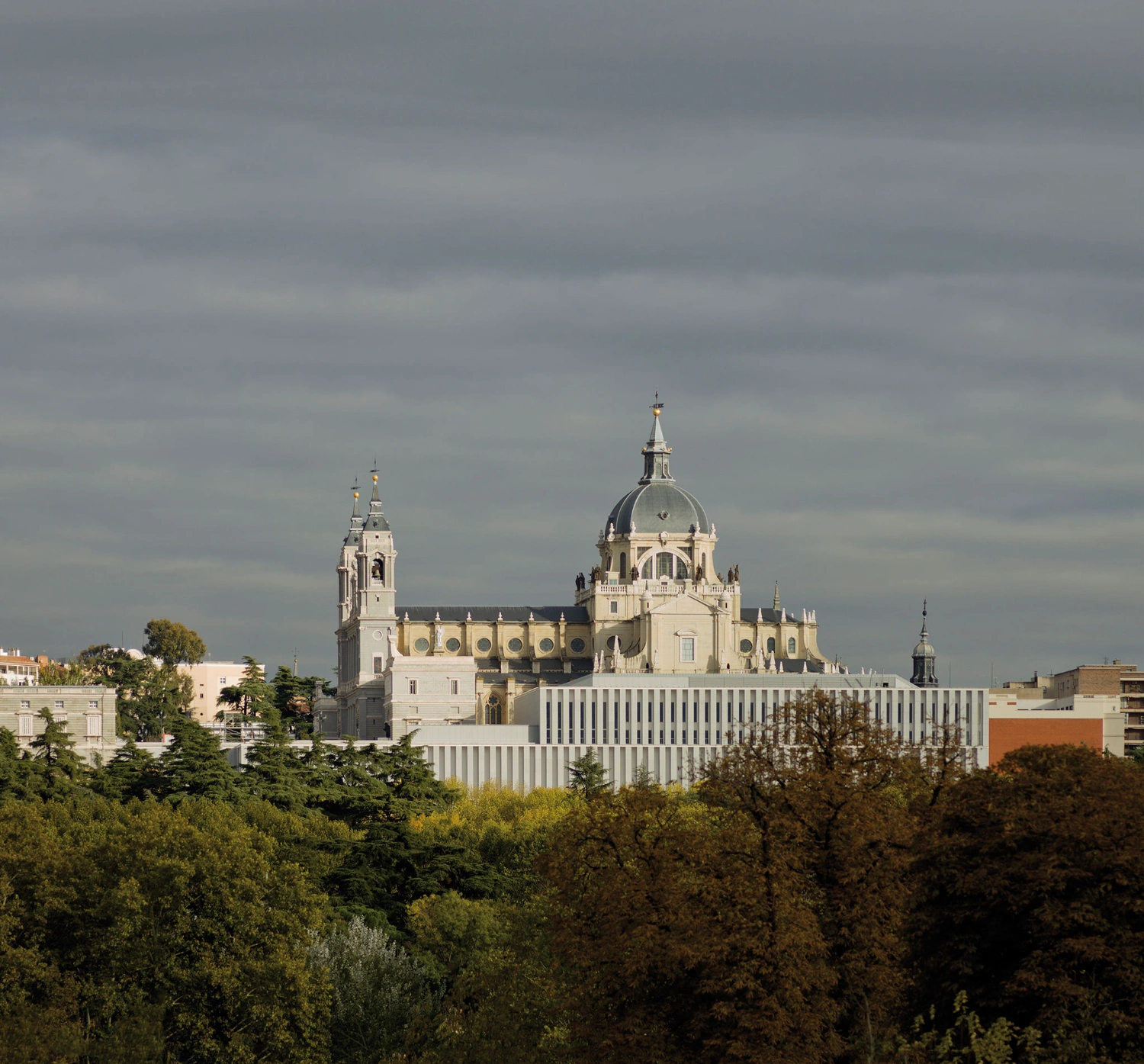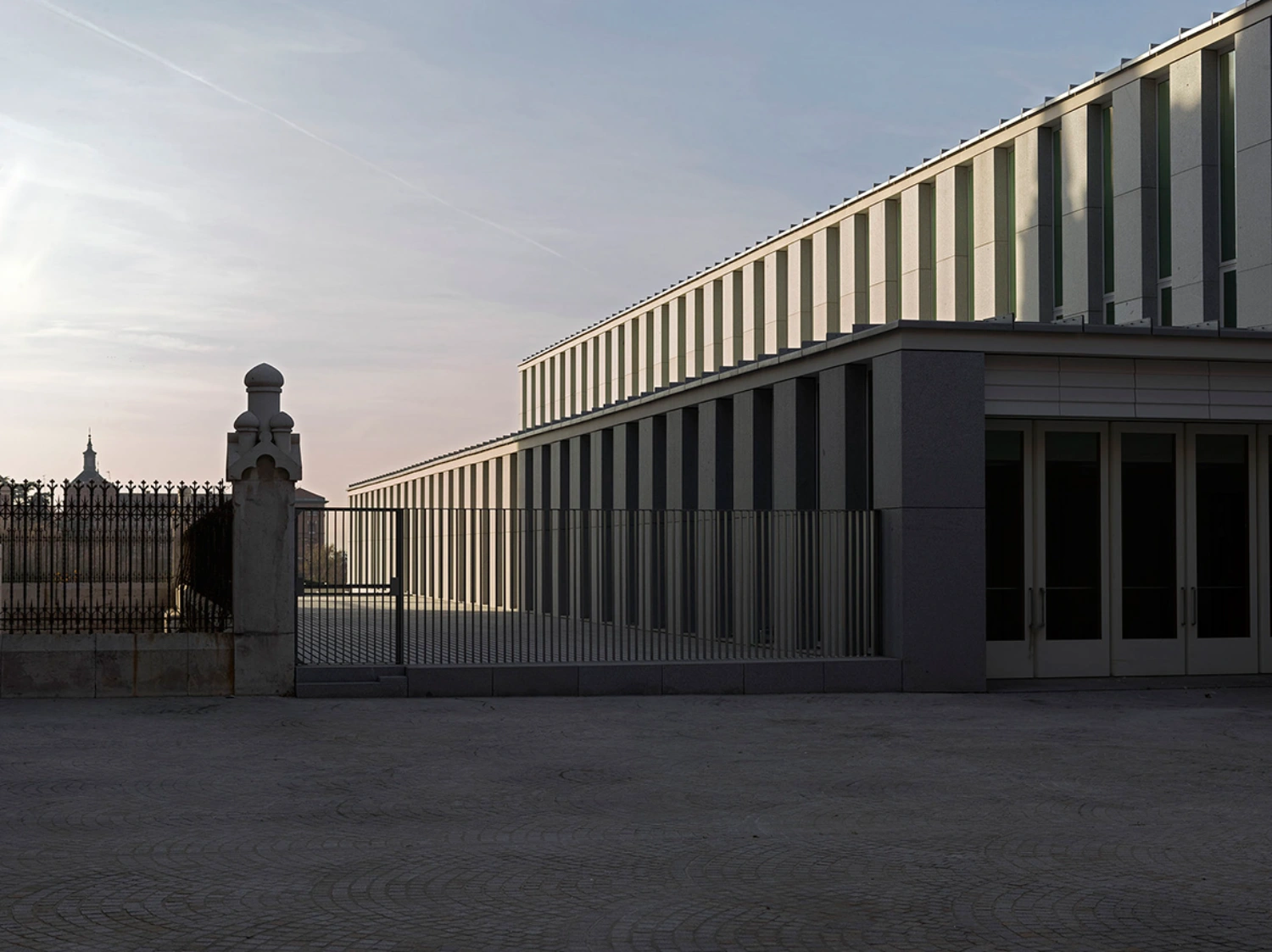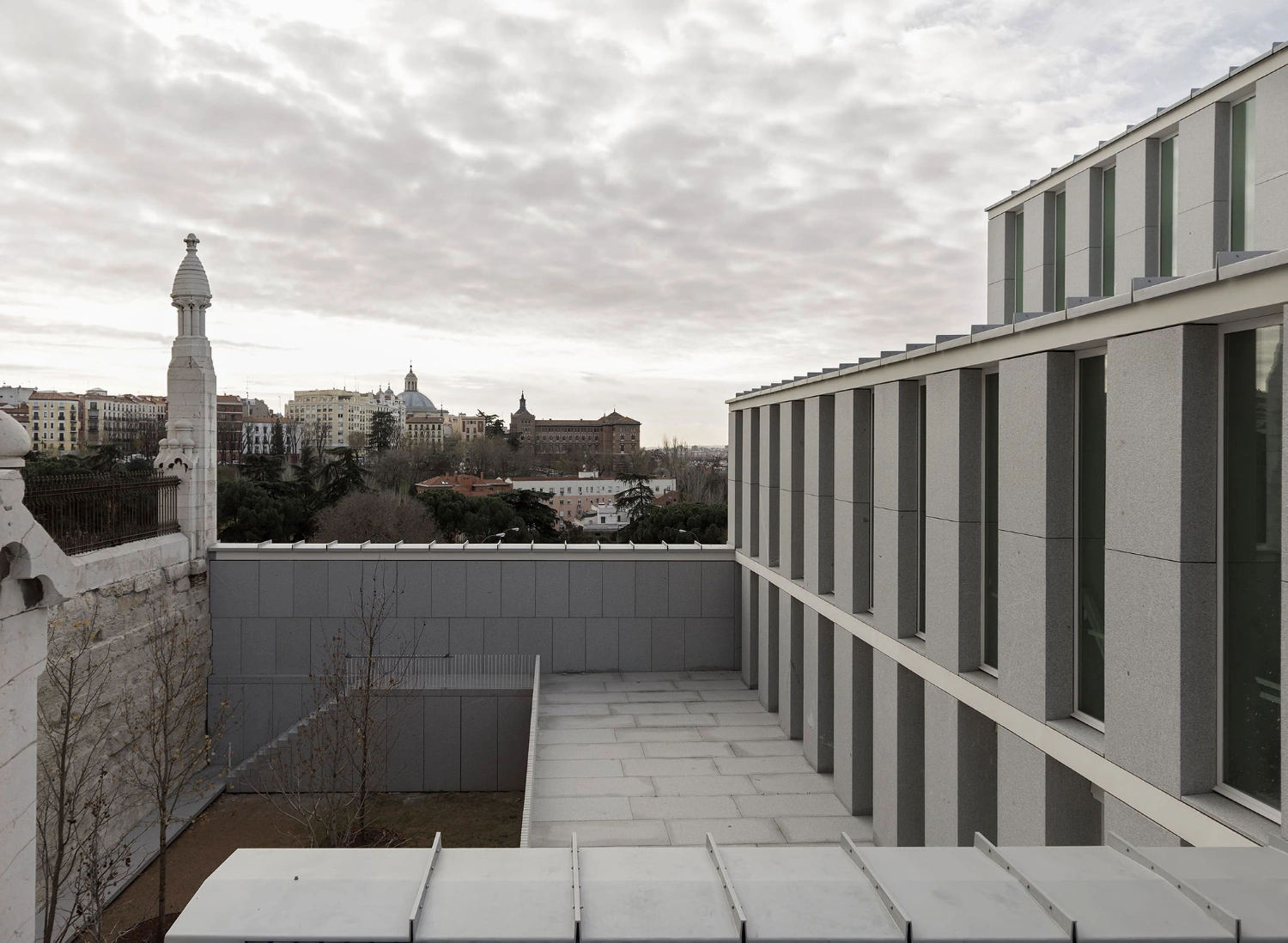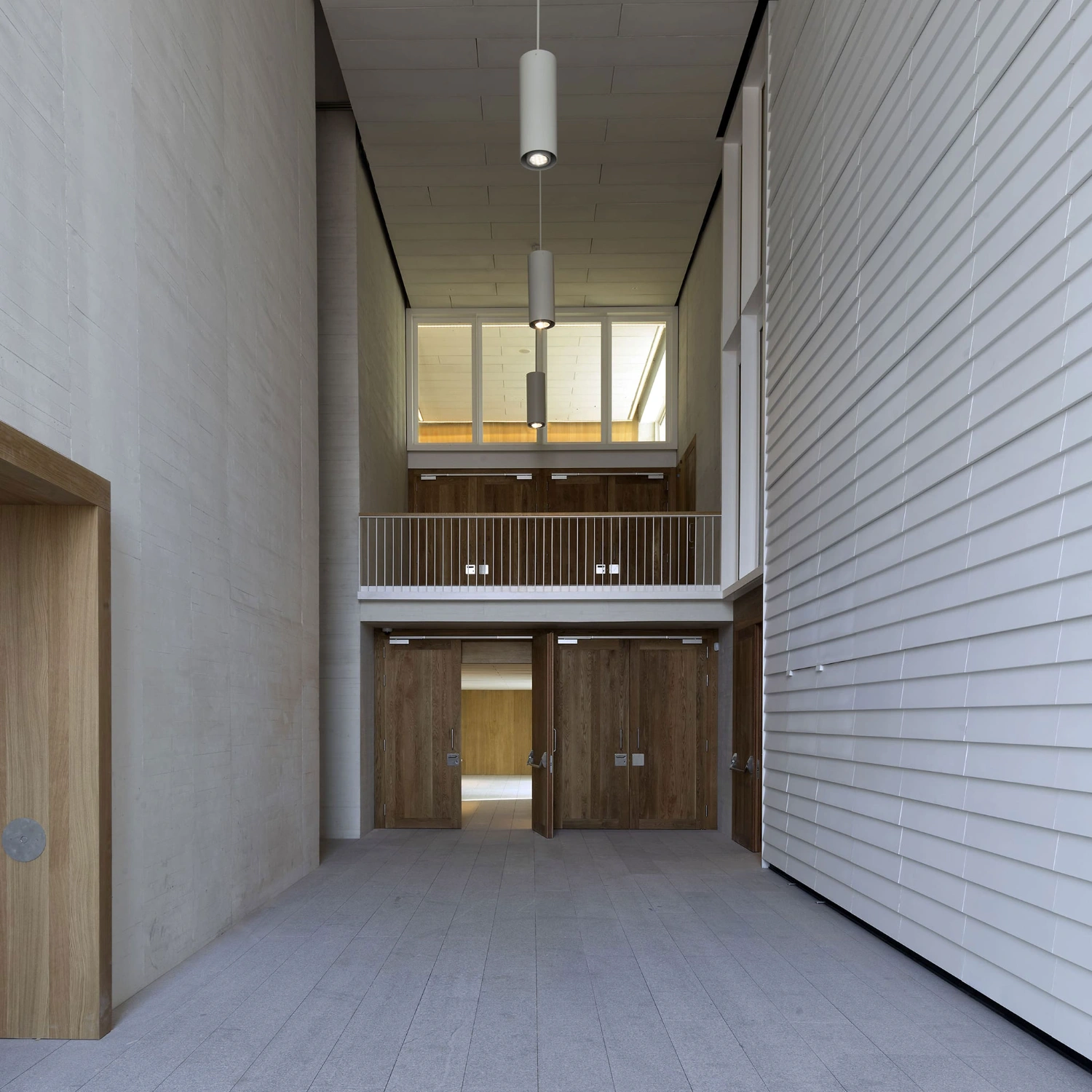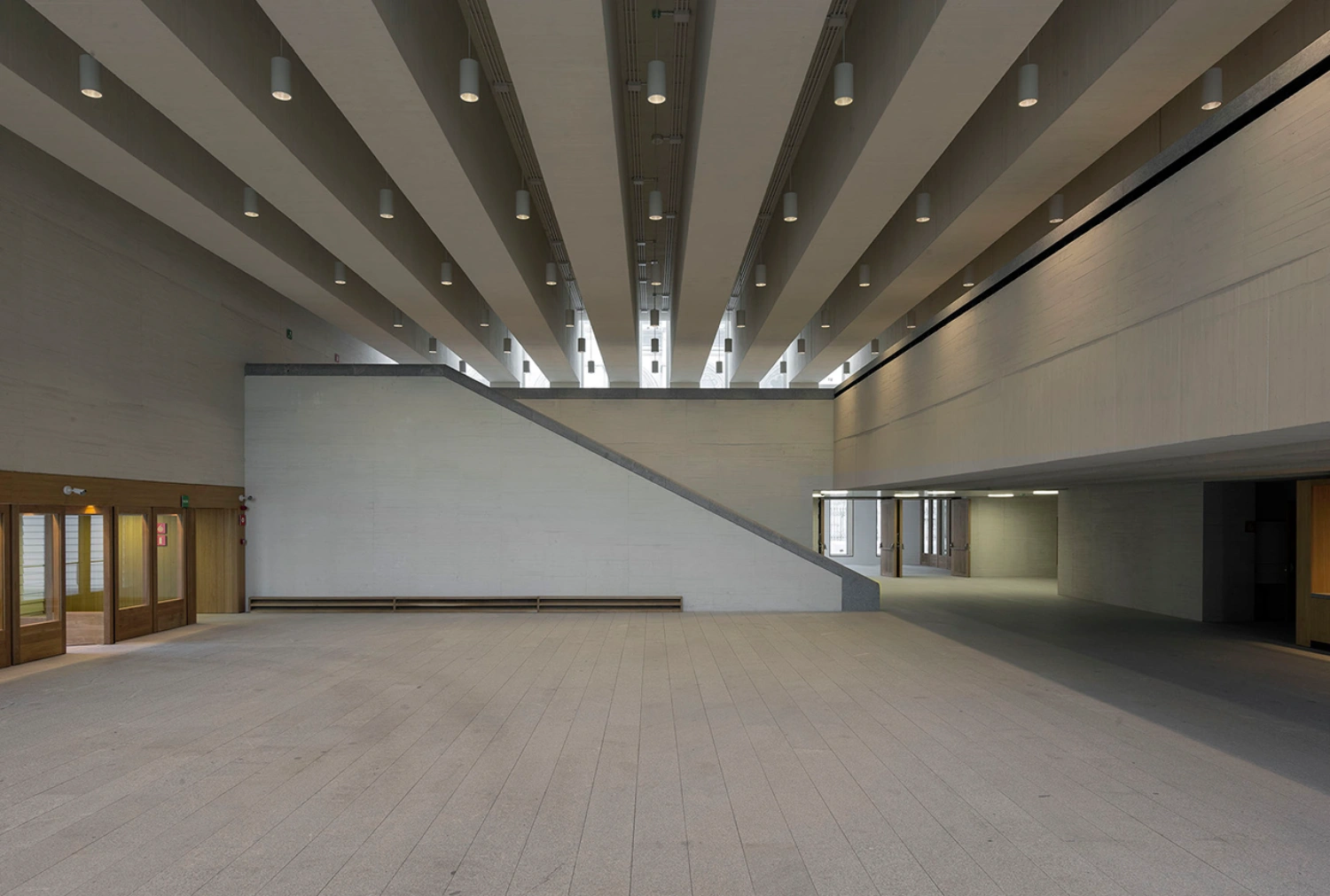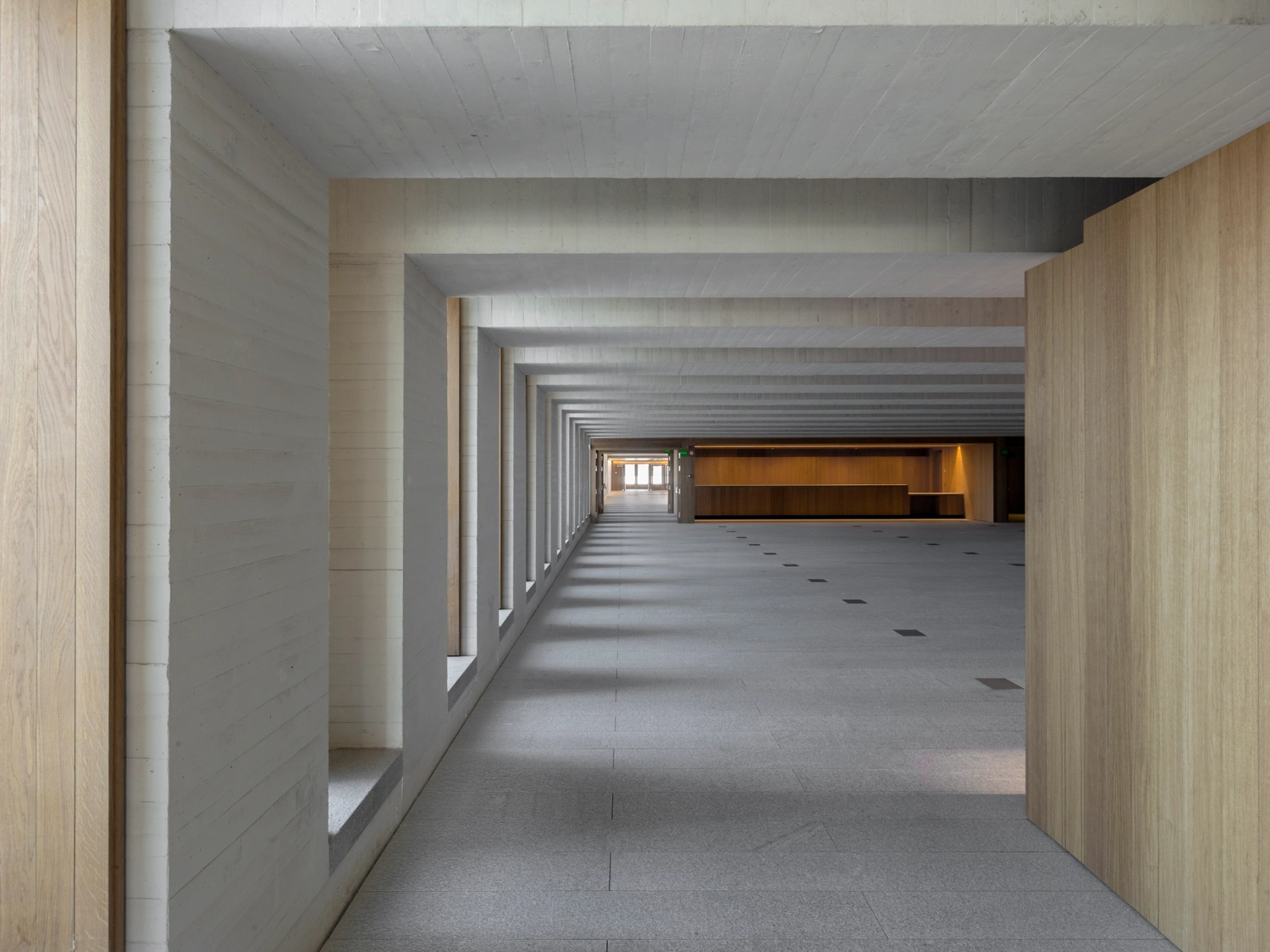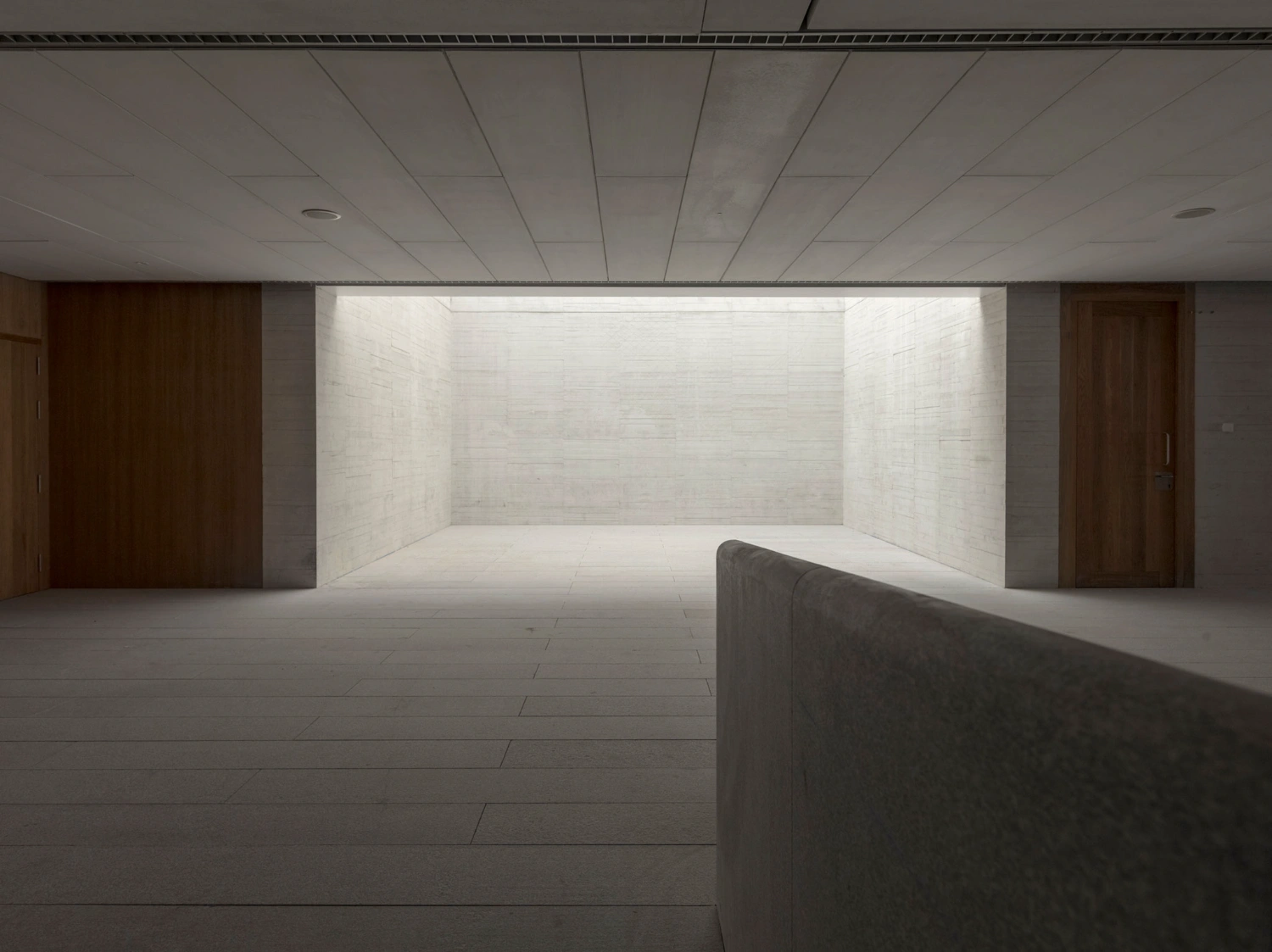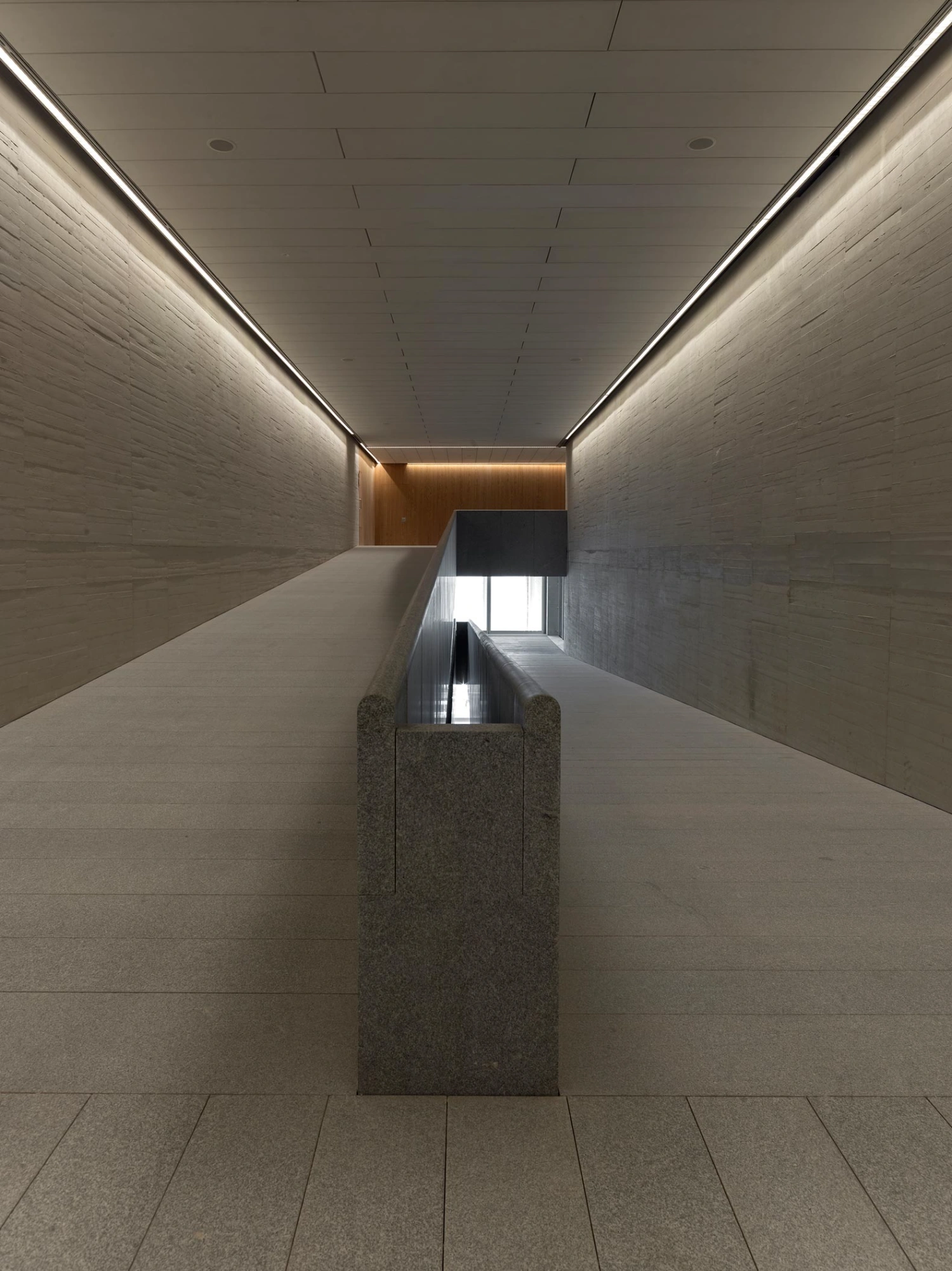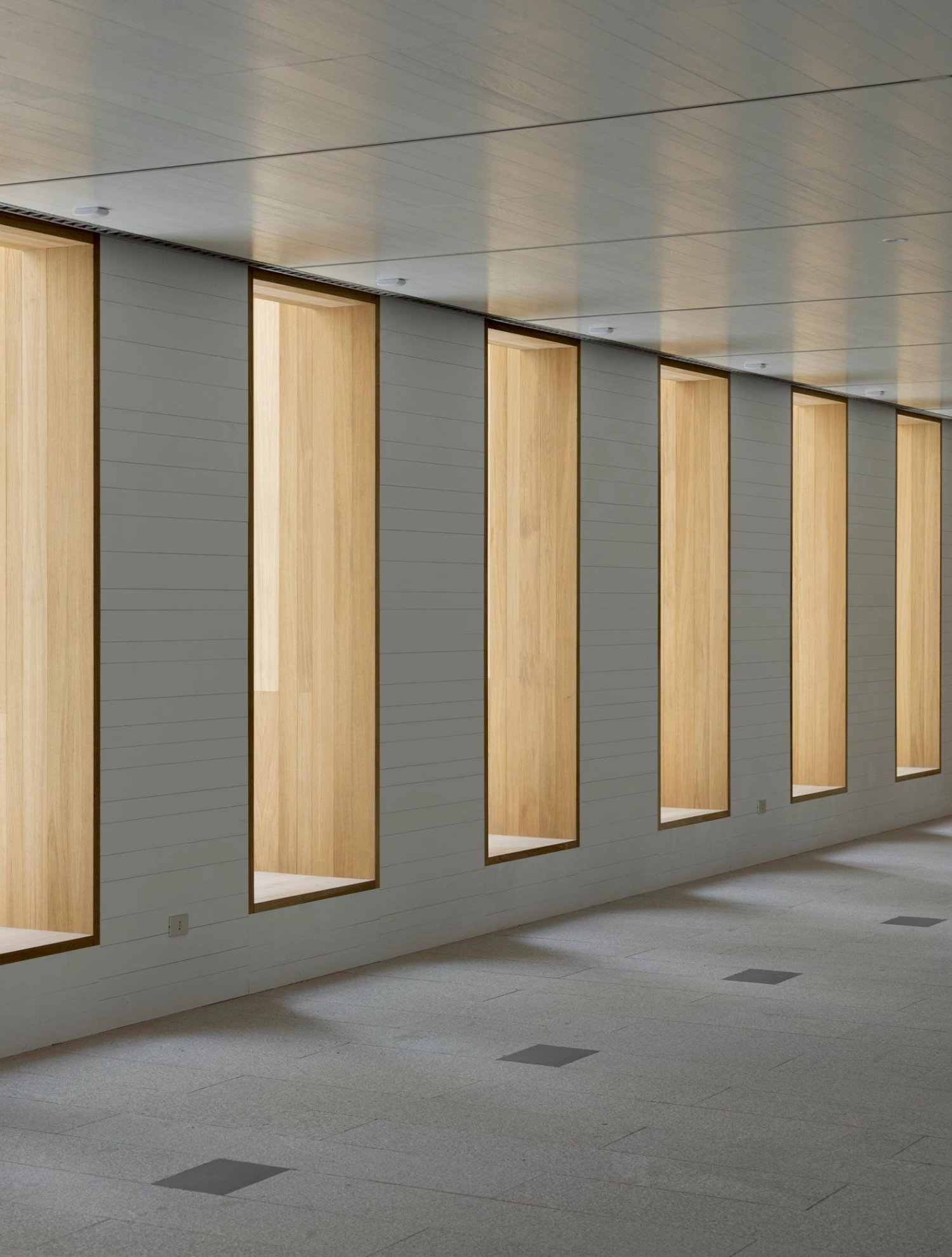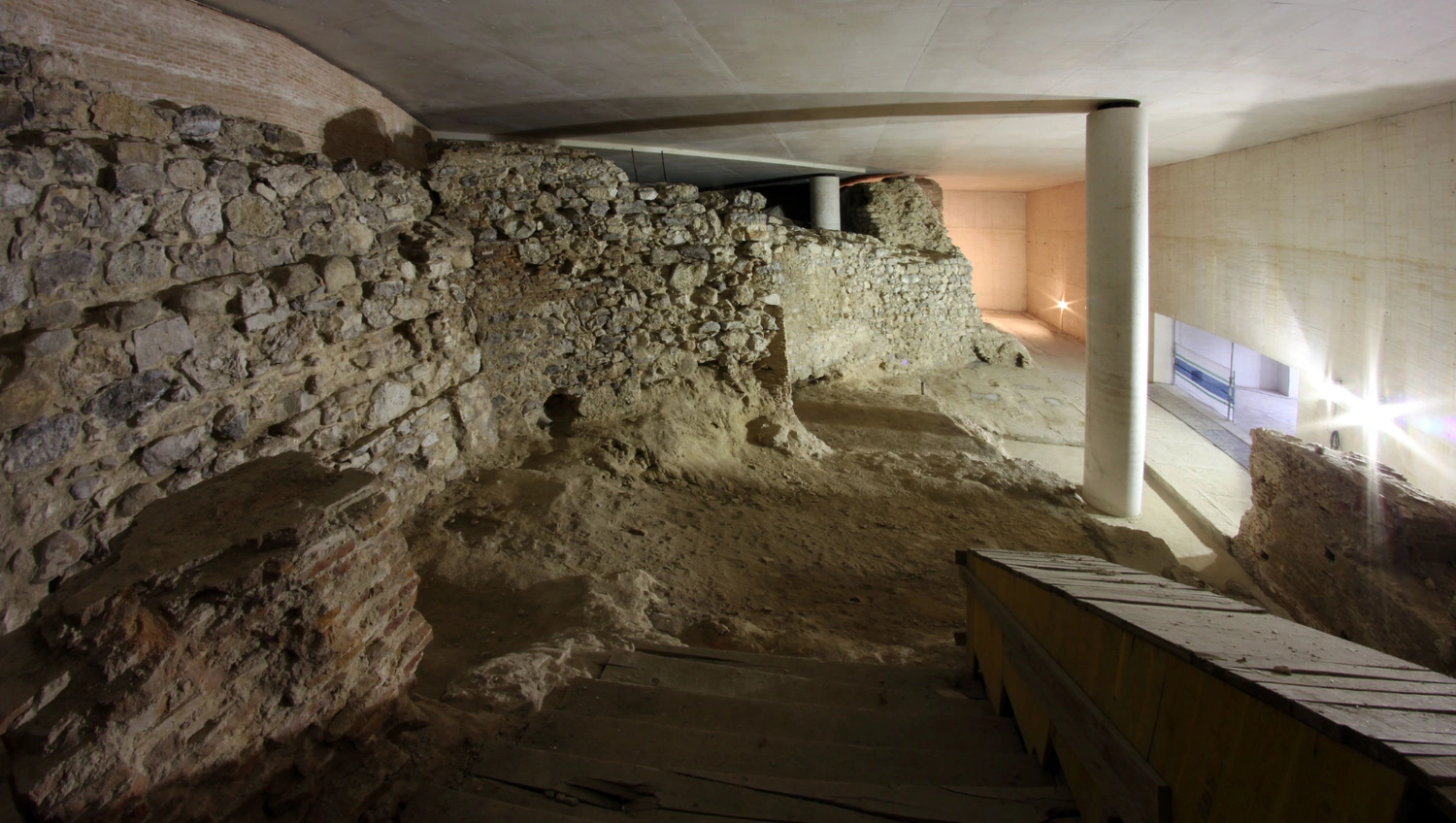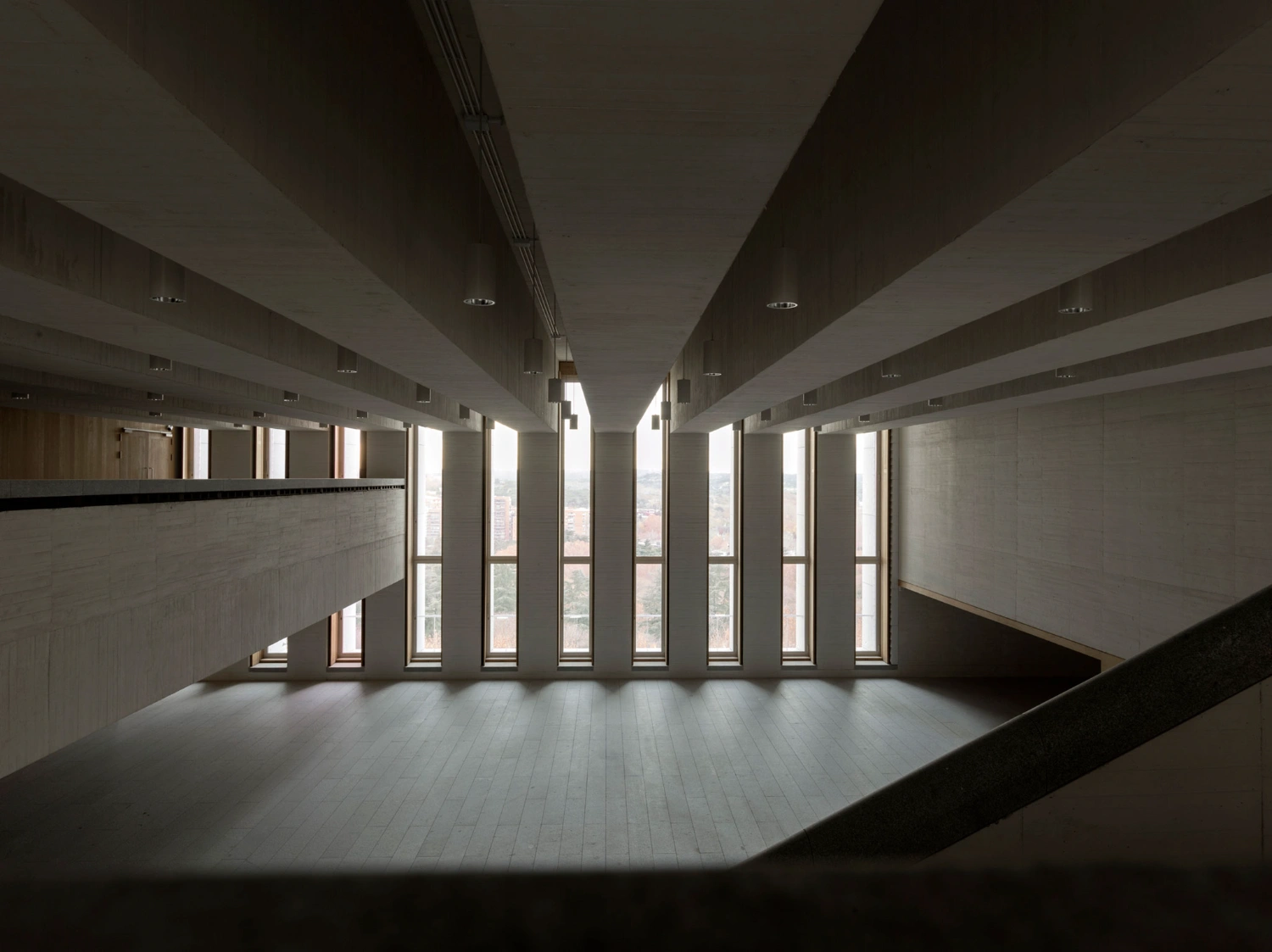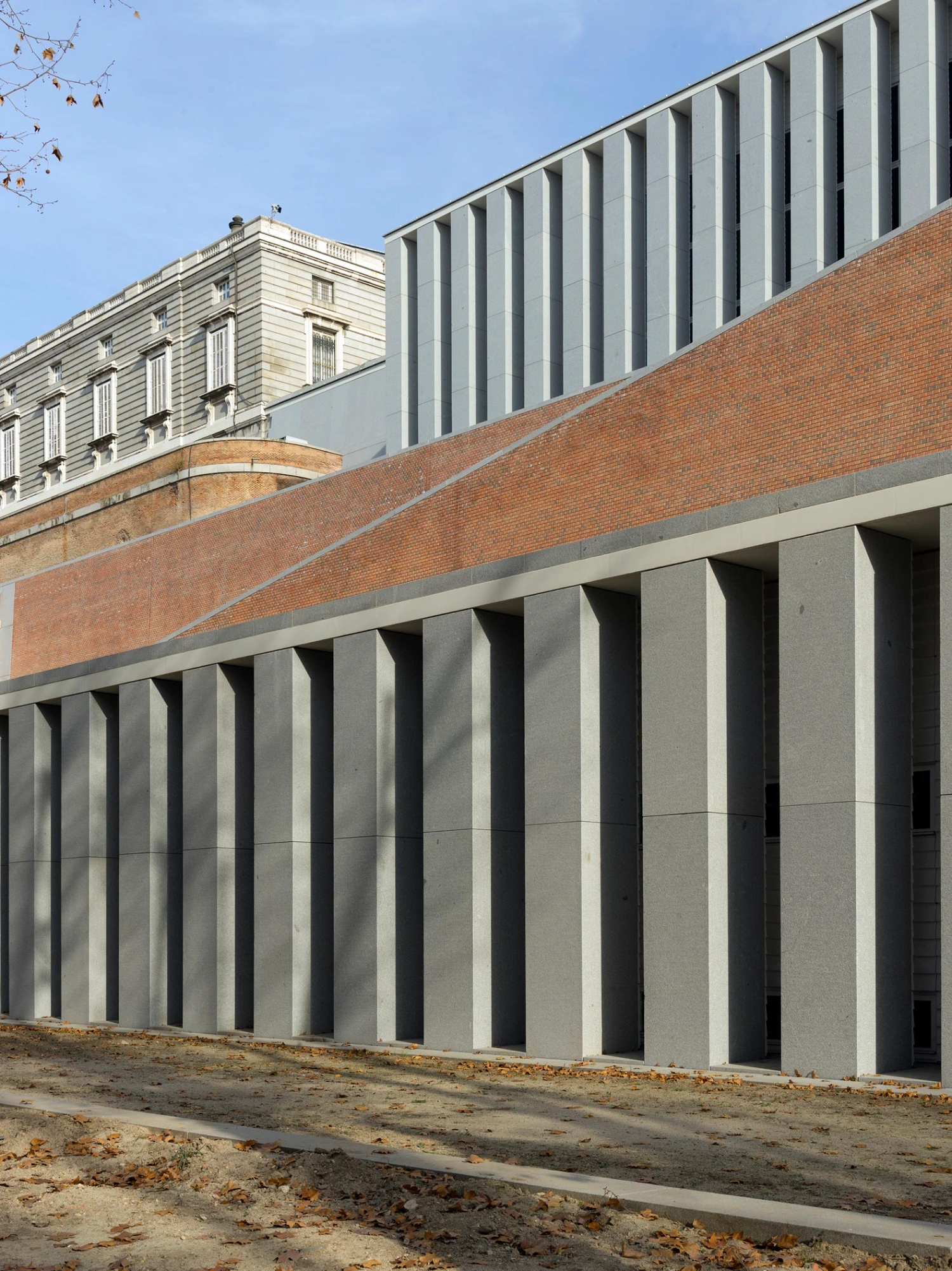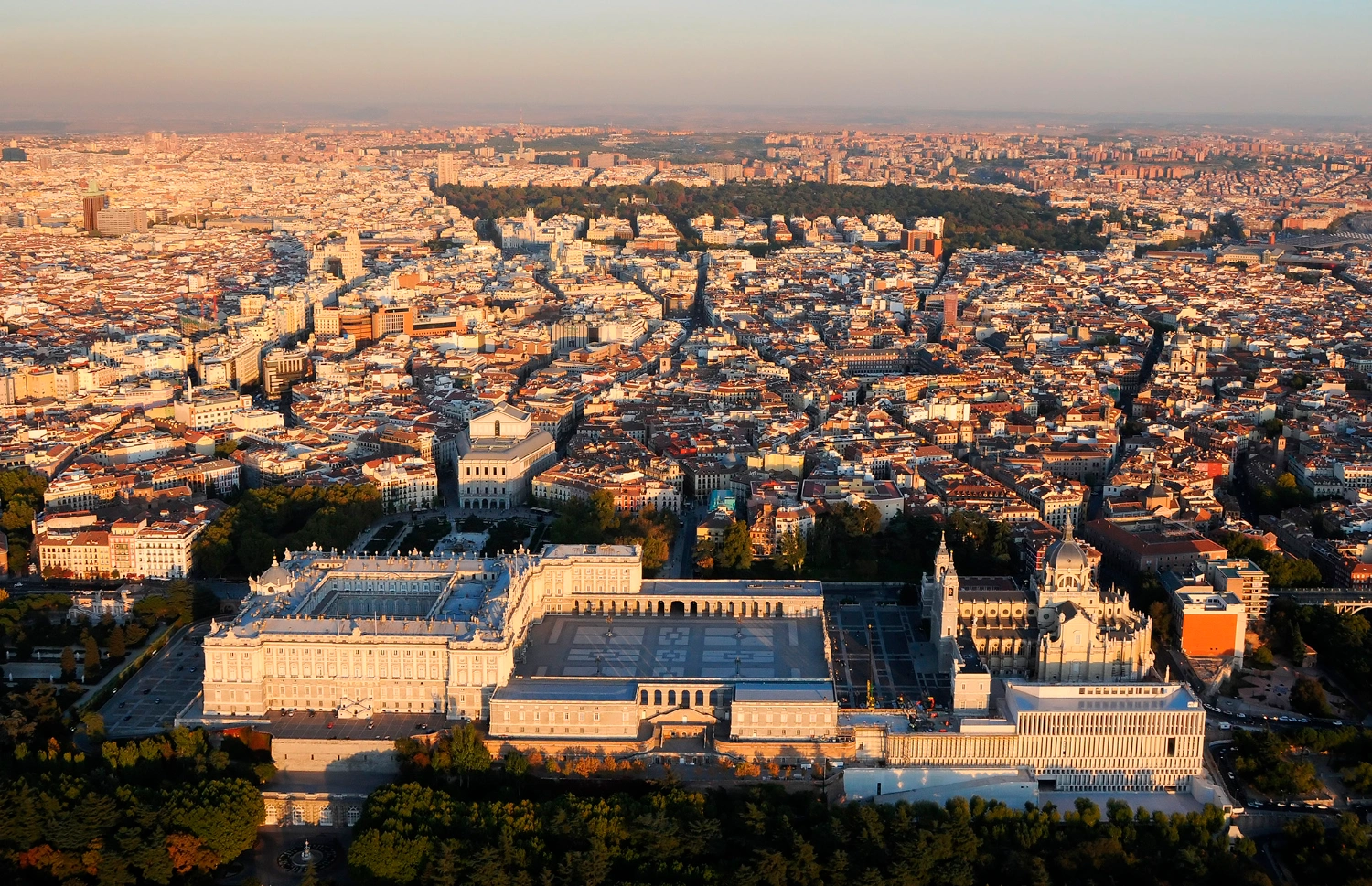Beneath Madrid’s Royal Palace, Mansilla & Tuñón craft a vast subterranean museum that redefines monumentality through restraint, merging landscape, structure, and heritage in seamless dialogue.
Conceived as an inhabited retaining wall beneath the Royal Palace, the museum reconciles monumental weight with spatial subtlety. Rather than compete with the Palace or the Almudena Cathedral, it completes them—anchoring the western edge of the city with a stoic, subterranean presence that amplifies the grandeur above through its own invisibility.
Built over nearly two decades, the 40,000-square-meter museum unfolds across fourteen floors, though much of it remains hidden within the topography. Its sheer length and precision—the showrooms extending over 100 meters—establish a rhythm of structure and void, a tectonic choreography of granite pillars, shadows, and air. Mansilla & Tuñón’s approach is one of disciplined order: flexibility achieved through clarity, richness derived from repetition.
Inside, the architecture dissolves into its functions—three exhibition levels house tapestries, paintings, and carriages, each conceived as vast warehouses of cultural memory. The rhythm of beams and columns generates a visual cadence where light becomes as structural as stone. Between these massive granite lattices, the museum opens discreetly to the Campo del Moro gardens, allowing the outside world to punctuate the otherwise introspective sequence of galleries.
This blurred relationship between structure, illumination, and space defines the museum’s poetics. It is a building that operates between opposites: heavy yet buoyant, opaque yet transparent. Every threshold between solid and void, interior and exterior, becomes a negotiation—a reminder that architecture here is not an object, but an interface. From the Royal Palace above, the museum reads as landscape; from within, it reads as horizon.
Mansilla & Tuñón’s Royal Collections Museum is not merely a container for heritage but a quiet continuation of it. The architects have constructed a building that heightens awareness—of material, history, and place—by concealing its own ambition.


